Would you rather read how it's done? Check out the text version of this video below:
Constant Contact fully supports uploading a text file (TXT) or comma separated value file (CSV), but there may be times when you want to convert a TXT or CSV file of contact information into an Excel spreadsheet (XLS or XLSX) first. Using an Excel spreadsheet makes it much easier to read and work with your data if you need to make edits before you import it, especially if your contact list is on the larger side.
Differences between TXT, CSV, and XLS file types
Text files, CSV files, and Excel spreadsheets are great ways to store data, depending on your need:
- Text File (TXT) - Text files contain plain text and are commonly created with NotePad (PC) or TextEdit (Mac). If you paste content into a text file, all the styles and formatting are stripped out, leaving you with plain text. This makes it easy to copy and paste data without formatting issues. If you paste spreadsheet data in to a TXT file, it's separated by tabbed spaces.
- Comma Separated Value File (CSV) - A CSV file also contains plain text and is versatile because it can be opened on any operating system, in any text editor, and also in spreadsheet applications, like Excel. If you paste spreadsheet data in to a CSV file, it's separated by commas.
- Excel Spreadsheet (XLS) - Excel spreadsheets can only be opened by other spreadsheet applications, like Google Sheets or OpenOffice Calc, but they have lots of formatting options, ways to calculate data through functions, and ways to present data visually through charts and tables. Information pasted into a spreadsheet is separated into cells, rows, and columns.
Take a look at the examples below to see how the same information is displayed in a text file, CSV file, and Excel spreadsheet:
| Example of Text file of contact information | Example of a CSV file of contact information | Example of an Excel file of contact information |
 |  | 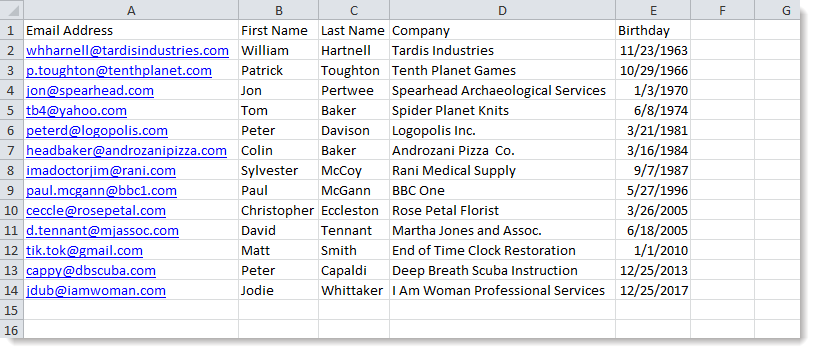 |
 | Did you know? CSV files are very versatile because they have such a basic format, they can be opened or exported by most programs. If you need to strip out extra formatting and just save your data, it's easy to convert an Excel file into a CSV file too! |
Steps to convert content from a TXT or CSV file into Excel
The steps to import a TXT or CSV file into Excel are similar for Excel 2007, 2010, 2013, and 2016:
- Open the Excel spreadsheet where you want to save the data and click the Data tab.
- In the Get External Data group, click From Text.

- Select the TXT or CSV file you want to convert and click Import.
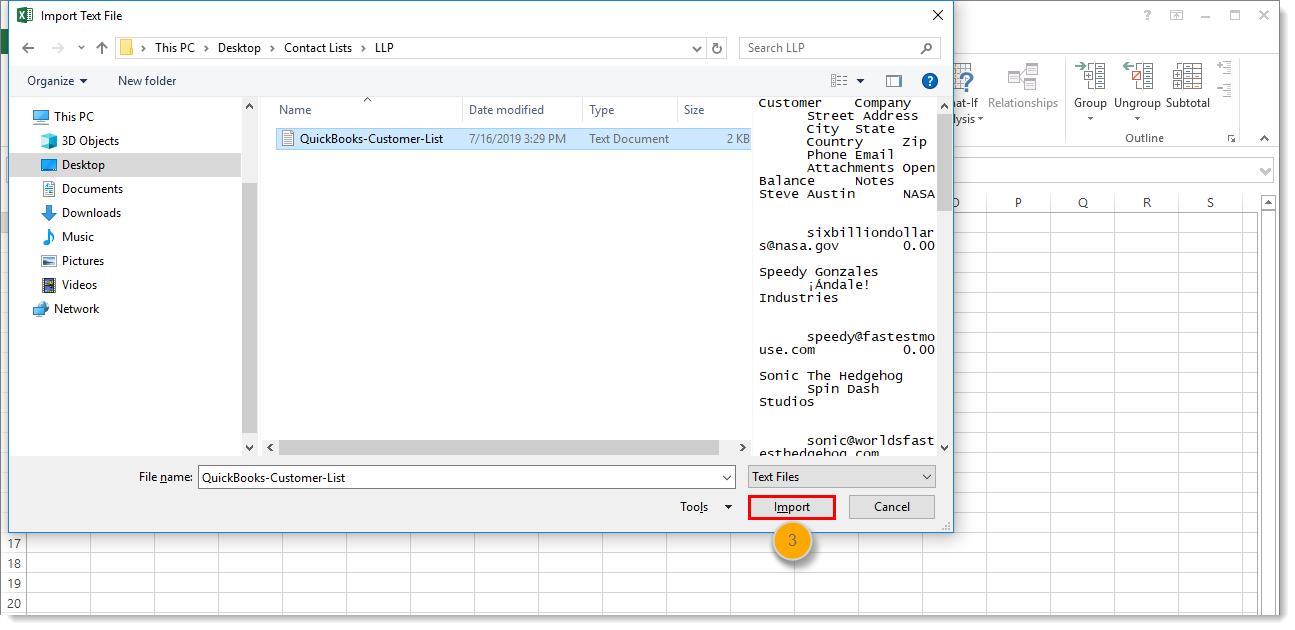
- Select "Delimited". A delimiter is just a fancy way of saying that your TXT file uses tabs or your CSV file uses commas to separate and group your data.
- Click Next.
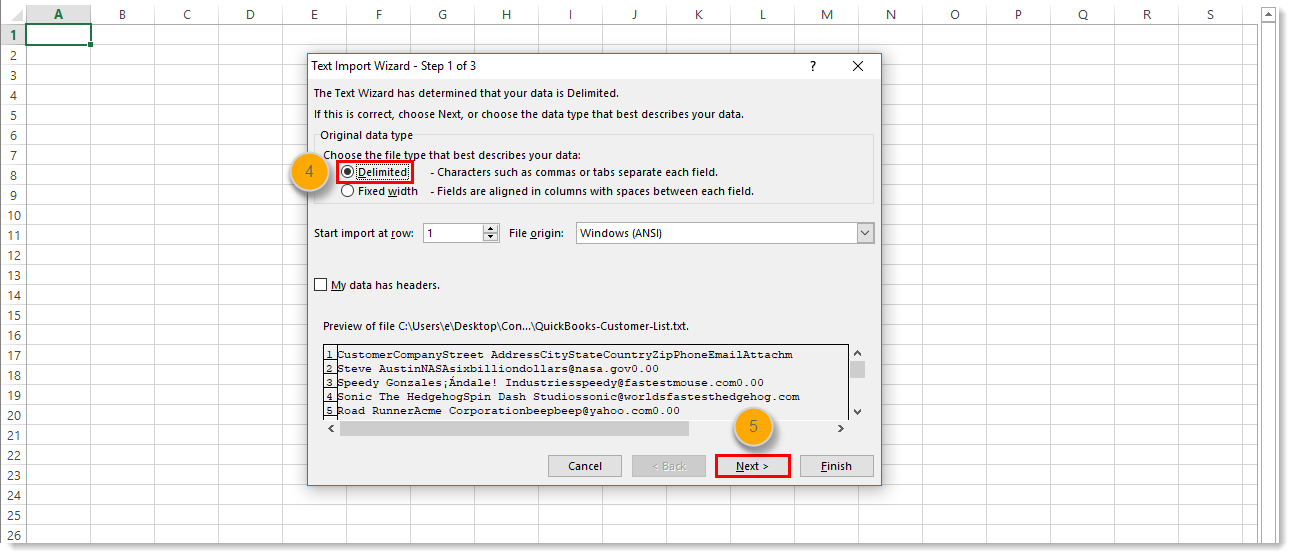
- Select the delimiter that groups your data into individual columns in the Data preview field. Typically you want to select "Tab" when converting a TXT file, and "Comma" when converting a CSV file.
Note: If you select "Space" it can sometimes split a single column into multiple columns if the column header text has multiple words. For example, a "First Name" column becomes a "First" column and a "Name" column. Look carefully at the Data preview to make sure your data is aligned with the intended column header! - Click Next.
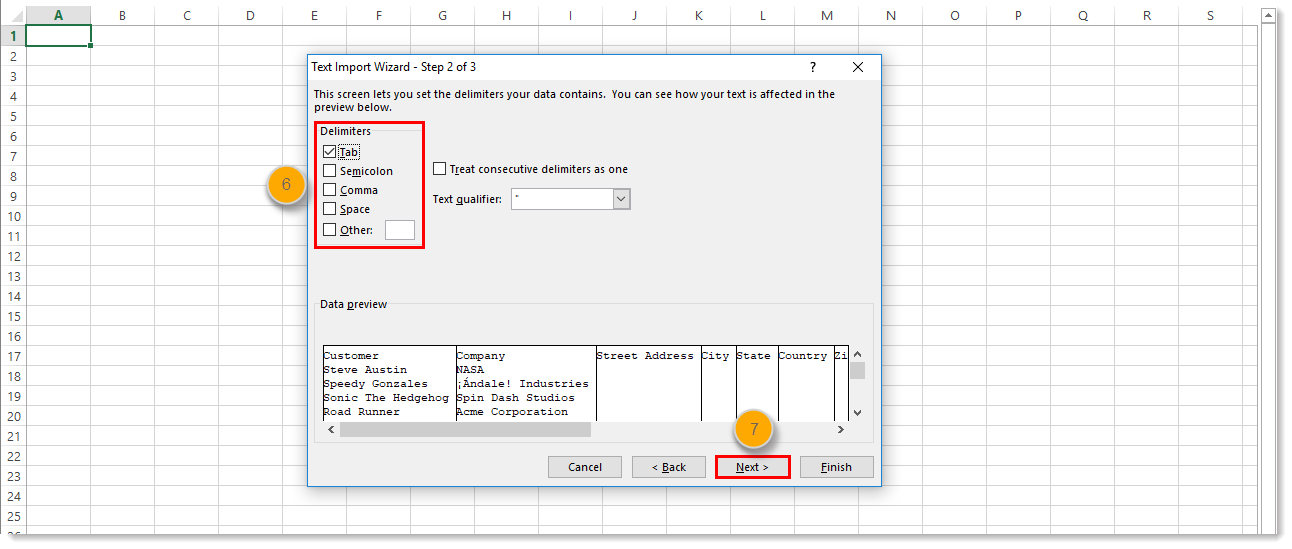
- Select "General".
- Click Finish.
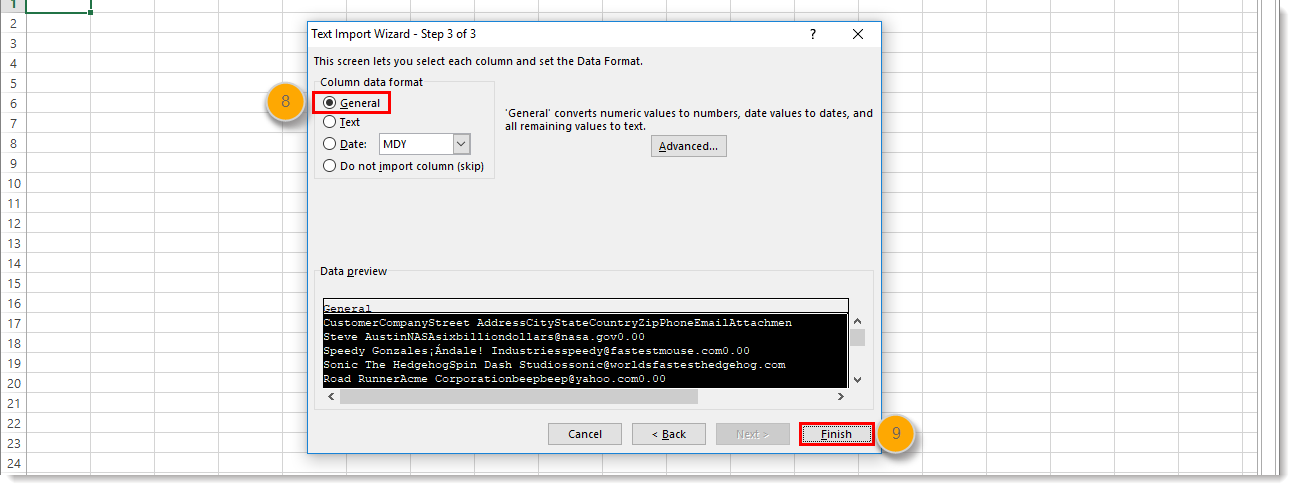
- Choose "Existing Worksheet".
- Add "=$A$1" to the field. This ensures your data begins in the Row 1, Column A cell of the spreadsheet. If there are any blank rows in the spreadsheet above your data, it can cause a file import error.
- Click OK.

- Click Save.
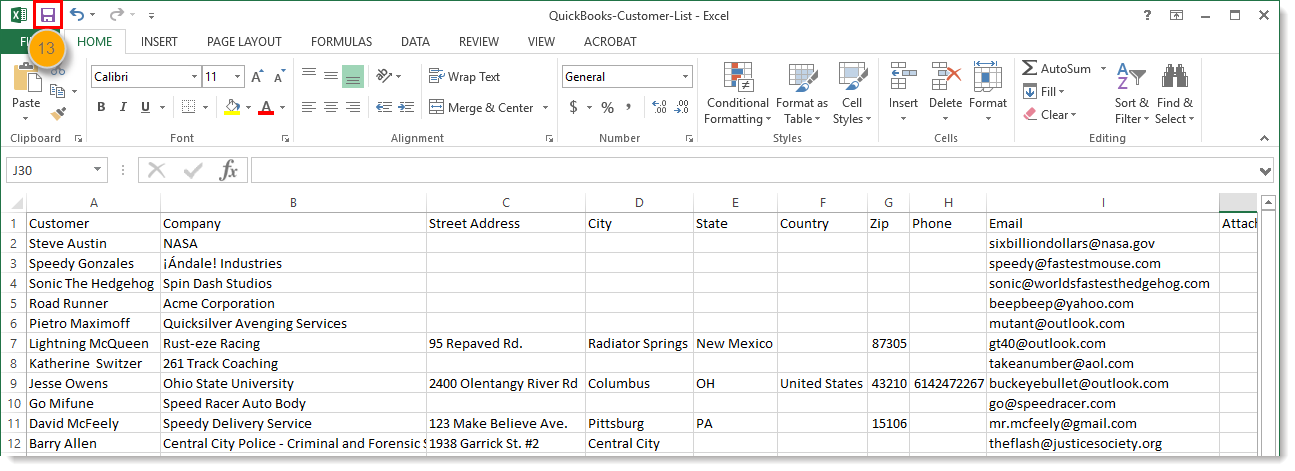
You can now make edits to the column headers to make sure they match the standard contact headings in Constant Contact, correct spelling, or update the formatting and remove special characters to prevent import errors. When you're ready, save your file and import your contacts.
Need more help saving a supported file as an Excel file? Please see Microsoft's Support.
Any links we provide from non-Constant Contact sites or information about non-Constant Contact products or services are provided as a courtesy and should not be construed as an endorsement by Constant Contact.









